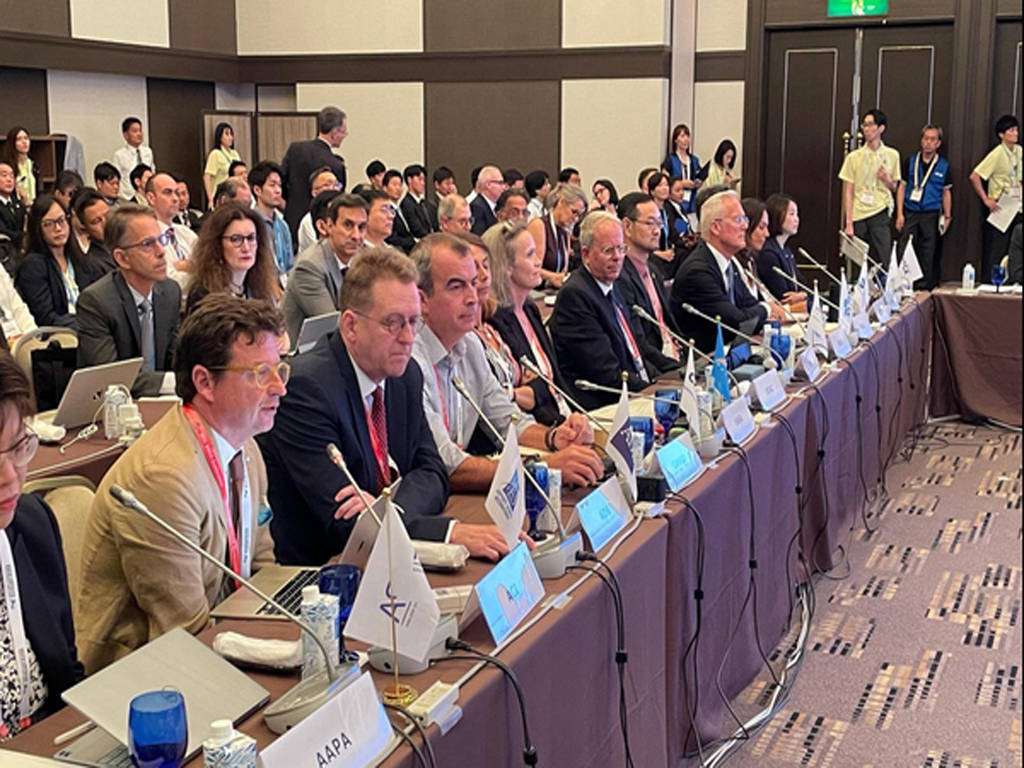Travel, Tourism & Hospitality
ICAO DGCA urges Asia-Pacific States to adopt ACI recommendations
The Airports Council International Asia-Pacific & Middle East (ACI APAC & MID) has presented recommendations at the 60th ICAO Conference of Directors General of Civil Aviation, urging States to implement the recommendations.

Airports Council International Asia-Pacific & Middle East (ACI APAC & MID), the trade association representing over 600 airports, made strong recommendations at the 60th ICAO Conference of Directors General of Civil Aviation (DGCA) for Asia and Pacific regions in Sendai, Japan recently.
The Members of the Conference endorsed the ACI APAC & MID’s recommendations and encouraged States to take appropriate steps for implementation.
ACI APAC & MID estimates that by 2053, airports in Asia-Pacific alone will handle 10 billion passengers annually—equivalent to today’s total global traffic.
To prepare for this exponential growth, governments and regulators must introduce forward-looking policies and promote affordable air travel, while Airports should improve safety standards, strengthen climate resilience, and incorporate security-by-design from the beginning to prepare for this exponential growth.
Against the backdrop, ACI APAC & MID presented four papers advocating for smarter, safer, sustainable and connected airports.
Key areas included careful adaptation of ICAO SARPS, climate adaptation, easing travel barriers, and integrating security into design, all aimed at making airports future-ready.
Stefano Baronci, Director General of ACI Asia-Pacific & Middle East, said: “Asia is already home to six of the world’s fastest-growing markets, while countries like China, India, Indonesia, Japan, Vietnam, and Thailand are poised to enter the exclusive billion-passenger club. With over half of all new aircraft deliveries destined for this region and air traffic movements expected to hit 47 million by 2043, the challenge is not about growth but readiness. The DGCA Conference continues to provide a positive direction in the region's approach to airport development. We are pleased with the overwhelming support from states on our policy recommendations and the positive conclusions of the conference, which reflect a shared commitment of our industry.”
• Transposition of ICAO Annex 14 SARPs: ACI Asia-Pacific & Middle East cautioned against a one-size-fits-all model that may hamper operations and safety considerations. The paper highlighted efforts by ACI, ICAO APAC, and several States in developing the guidance for transposing Annex 14 Vol. I SARPs into national aerodrome standards. ICAO urged States to apply the guidance and provide feedback, and the conference fully endorsed the establishment of national aerodrome standards based on ICAO Regional Guidance.
• Climate Adaptation Guidance and Tools: ACI Asia-Pacific & Middle East introduced its Climate Adaptation Guidance, Risk Maturity Tool and Climate Risk Assessment Tool enabling airports to assess and mitigate risks from extreme weather events such as heatwaves, cyclones, and floods. The Conference adopted the recommendations and agreed to engage in regional collaboration to boost climate resilience.
• Barriers to Air Travel for Consumers (co-sponsored by IATA): ACI APAC & MID and the International Air Transport Association (IATA) jointly urged States and Territories to remove discriminatory taxes on aviation, consider the financial viability of airport operators when determining concession fees and simplification of visa processes to make travel more affordable and accessible.
• Enhancing Security with Appropriate Airport Design (co-sponsored by Singapore and the US): With support from Singapore and the USA, ACI APAC & MID reiterated its call to embed security into airport design through a "security-by-design" approach—ensuring the evolving requirements of security operations are addressed early to avoid costly retrofits and inefficiencies. The Conference fully endorsed the proposed action to integrate security considerations into the design of new and refurbished airport infrastructure.
As the region enters the new phase of growth, ACI APAC & MID remain committed to supporting airports and working with governments and industry stakeholders is making aviation continue to deliver social and economic benefits. -TradeArabia News Service
